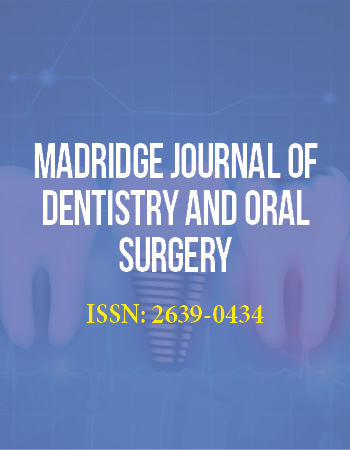International Conference on Dentistry
April 3-5, 2017 Dubai, UAE
Utility of whole saliva and subgingival plaque in detection of putative periodontopathic bacteria and Herpes viruses in patients with aggressive periodontitis and healthy controls
1Zayed University, UAE
2University of Bergen, Norway
3University of Science and Technology, Sudan
Background and Objectives: The microbial profile of aggressive periodontitis patients is considered to be complex with variations among populations in different geographical areas. The aim of this study was to determine the prevalence of four putative periodontopathic bacteria (Aggregatibacteractinomycetemcomitans, Porphyromonasgingivalis, Tannerella forsythia, Treponemadenticola) and two periodontal herpes viruses [Epstein-Barr virus-1 (EBV), human cytomegalovirus (HMCV)] in subgingival plaque and whole saliva of Sudanese subjects with aggressive periodontitis and their family members and to compare the results with those of healthy controls.
Material and Methods: The study group consisted of 122 subjects, 17 aggressive periodontitis patients, 17 periodontally healthy controls (14-19 years of age), 54 family members of the cases and 34 family members of the controls. Whole stimulated saliva and pooled subgingival plaque were collected and analyzed for detection of bacteria and viruses using loop mediated isothermal amplification (LAMP).
Results: Prevalence of subgingival A. actinomycetemcomitans, HCMVand P. gingivalis were significantly higher among aggressive periodontitis patients than periodontally healthy controls. Co-infection with A. actinomycetemcomitans, HCMV and/or EBV-1 was restricted to the cases and their family members. Pooled subgingival plaque showed significant higher prevalence of A. actinomycetemcomitans and P. gingivalisthan whole stimulated saliva in this population (p=0.0001, p=0.04). Increased risk of aggressive peritonitis was the highest when A. actinomycetemcomitans& was detected together with EBV-1(OD 49.0, 95% CI2.5-948.7, p= 0.01) and HCMV(OD 39.1, 95% CI 2.0 - 754.6, p= 0.02).
Conclusions: In Sudanese patients, A. actinomycetemcomitansand HCMV were the most associated test pathogens with aggressive periodontitis. Saliva may be useful as an alternative sampling tool for selected pathogens. However, parallel subgingival sampling is recommended for A. actinomycetemcomitansand P. gingivalis.
Biography:
Elamin is an assistant professor at Zayed University, United Arab Emirates. She earned her Bachelor of Dental Surgery (BDS) from Khartoum University, Sudan. Dr. Elamin obtained her PhD from Section for Microbiology and Immunology, The Gade Institute, University of Bergen, Norway. Dr. Elaminʼs research mainly focuses on the microbial etiology of aggressive periodontitis, specificallyintra-species phylogenetic differences and virulent clones of Aggregatibacteractinomycetemcomitans associated with the aggressive periodontitis. In addition she is interested in bacterial-viral interactions in oral cavity.
Her main research interest is childrenʼs and adolescents oral health. Mainly examining the etiology of aggressive periodontitis and intra-species phylogenetic differences and identify virulent pathogenic clones of Aggregatibacteractinomycetemcomitans associated with the disease. Dr. Elamin is also interested in pre-school oral health and associating it to dietry habits and parenting styles.


